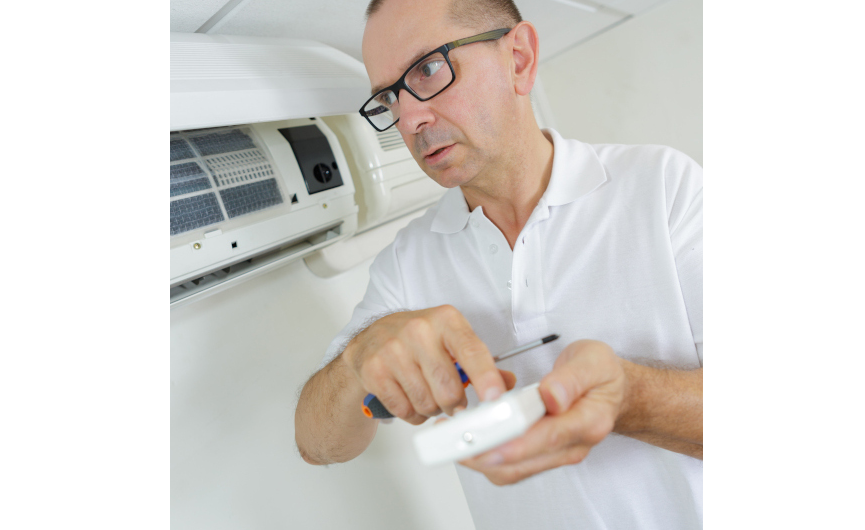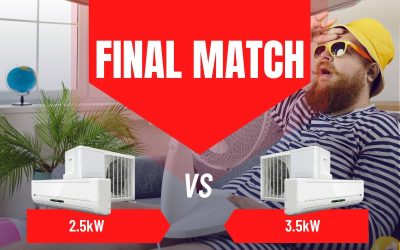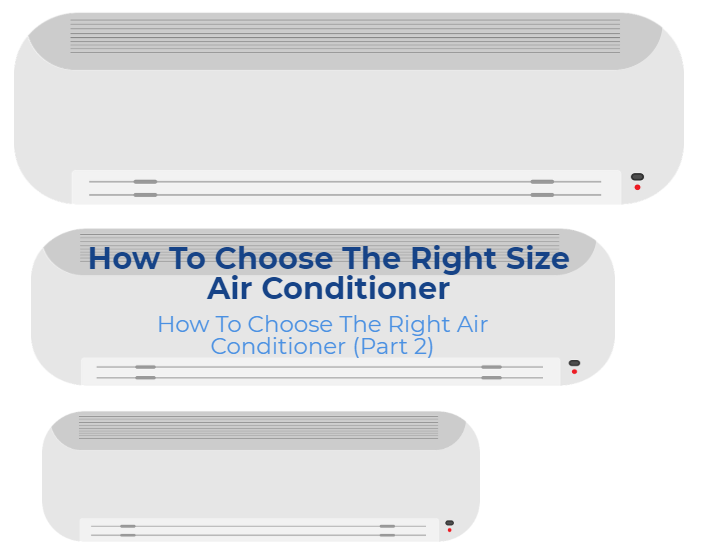Click here to read part 1 and part 2 of our common air conditioning problems series.
Air Conditioner Thermostat Is Not Working

One of the most common issues with an air conditioner is a miscalibrated or broken thermostat. If the thermostat for your air conditioner is not functioning as it should, it can result in an air conditioner that won’t turn on or off.
This is because the thermostat uses the temperature (measured by sensors) of the air in the room to tell the air conditioner when to turn on or off. For example, if the temperature on the thermostat is set to 20 degrees, once the room temperature reaches 20 degrees, the thermostat will tell the air conditioner to turn off.
However, if the sensor is damaged or knocked out of place, the measured temperature will be inaccurate, causing the air conditioner to turn off or on seemingly at random.
If your air conditioner won’t turn on it could be because the sensor is measuring the room temperature as lower than the temperature set on the thermostat. To test if this is the case, try setting the thermostat to the lowest temperature. If your air conditioner turns on, there is a problem with the sensor.
Conversely, if your air conditioner still doesn’t turn on, the problem may be the thermostat. Try replacing the batteries in the thermostat. If that doesn’t work, it’s time to call a professional as your thermostat may need to be recalibrated or replaced.
Air Conditioner Is Cooling Unevenly

Another common air conditioning problem is an air conditioner that is cooling unevenly or leaving hot spots in a room. One cause of an unevenly cooling air conditioner could be leaking ducts. When there is an air leak in the duct of an air conditioning system, some of the cool air will escape before reaching the intended room. This will cause some rooms to be cooler than others.
If you suspect that there is a leaking duct in your ducted air conditioning system, contact your local air conditioning specialists as soon as possible as air leaks will reduce the energy efficiency of your air conditioner, causing your energy bills to skyrocket.
Alternatively, hot spots could be caused by poor insulation or rooms with north facing windows. If this is the case, try using blackout curtains during the hottest part of the day in rooms with north facing windows. You may also want to consider a ducted air conditioner with zoning that allows you to individually set temperatures for each zone of the house to account for naturally hotter rooms.
Air Conditioner Is Leaking Refrigerant
If your air conditioner is not cooling properly and leaving the air humid, it could be an indication that the refrigerant is low. There are two possible reasons for low refrigerant levels:
The air conditioner was undercharged when it was installed
There is a refrigerant leak
If the refrigerant was undercharged, you will need to hire a professional to recharge the system to match the manufacturer’s specifications for refrigerant levels. However, if there is a refrigerant leak, simply recharging the system is only a temporary fix. You will need to hire a professional to test and repair the leak. If there are multiple leaks, you may need to replace the entire unit.
Choose Advanced Climate Solutions

Whether you have a broken thermostat, an unevenly cooling air conditioner or a refrigerant leak, Advanced Climate Solutions has the solution. Our team of highly trained air conditioning technicians are on call 24/7 for emergency breakdowns to ensure that your air conditioner runs smoothly all year long.
For more information on common air conditioning problems and how to fix them, click the links below.
Common Air Conditioning Problems (And How To Fix Them) – Part 1
Common Air Conditioning Problems (And How To Fix Them) – Part 2




